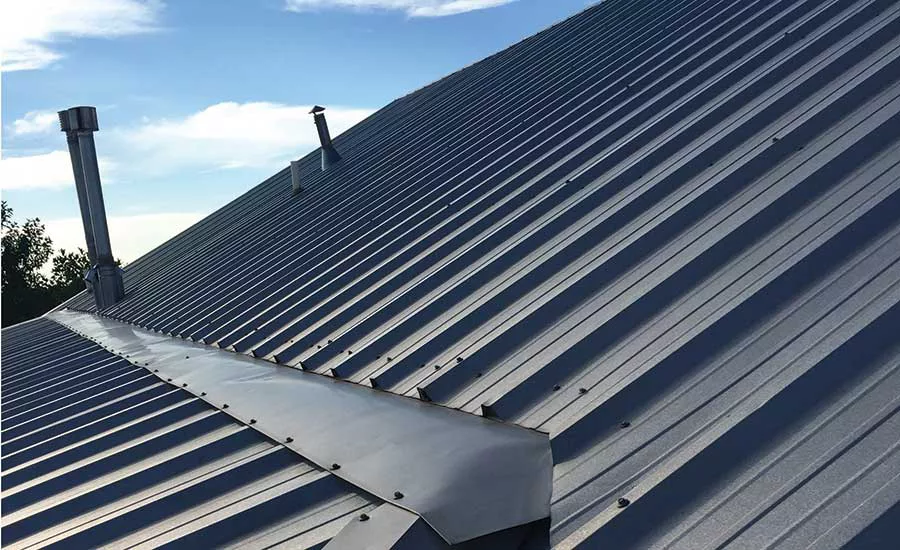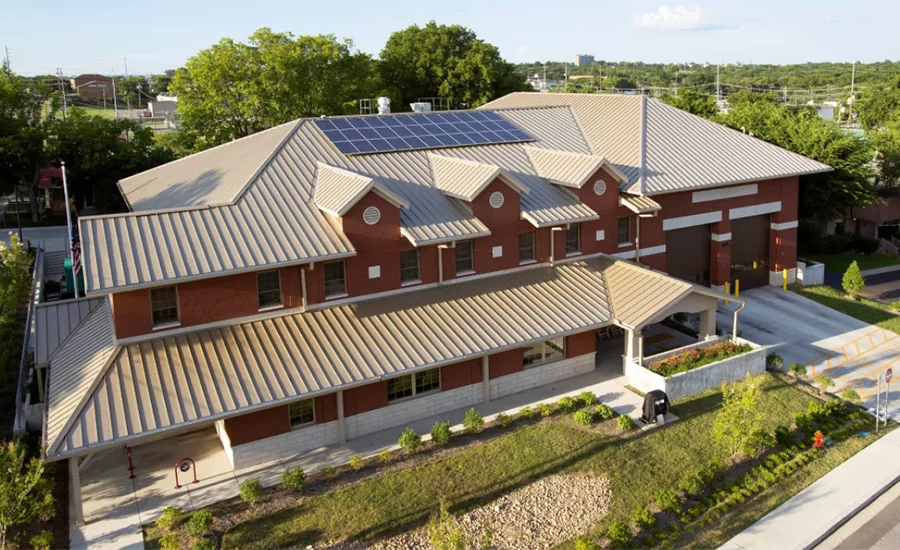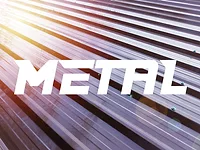The True Cost of Metal Roofing
Metal roofing has seen an increase in popularity, but how much does a metal roof really cost?

Metal roofing has seen an increase in popularity, but how much does a metal roof really cost?

Metal roofing has seen an increase in popularity, but how much does a metal roof really cost?
Metal roofing, once relegated to barns and sheds, has seen an increase in popularity in recent years. Updated designs and incredible durability have drawn the attention of roofing contractors, homeowners, and business owners looking for a low maintenance, long-lasting option. These benefits could increase costs compared to traditional asphalt shingles, but how much does a metal roof really cost?
Customers may have some sticker shock when comparing metal to the pricing of traditional roofing, but the benefits far outweigh the costs.

The Benefits of Metal Roofing
Metal roofing offers many benefits to home and business owners. Most importantly, it is significantly stronger and more durable than its asphalt counterpart. Metal roofing is resistant to both high wind and fire, and is longer-lasting than traditional roofing. Asphalt shingles may last anywhere from 15 to 30 years, but metal roofing could last up to 50 years or more! They also require very little maintenance and can even be cleaned with a basic pressure wash.
Because of the reflective properties of “cool technology” paint systems, metal roofing is also an effective insulator. It reflects more UV rays, which helps to keep buildings and homes cooler, even in the summer months. Over the course of the warmer season, a metal roof could even help save money on energy bills. In addition, the materials are often made of recycled materials, and 100% recyclable themselves. Metal roofing, then, is not just beneficial to the home or business owner, it is also beneficial to the environment.
Metal Roof Materials
The average cost of a metal roof is somewhere between $5.50 and $15.50 a square foot, though many factors go into the true cost of the roof. One of the largest considerations affecting price is the material used. Below are several common materials for metal roofing, priced per square (a 10 foot by 10 foot section of roofing).
STEEL
Steel is used in agricultural, commercial, architectural, and residential. Galvanized steel is resistant to rust and low maintenance with an average cost of $150-$350 per square. Galvalume is a more affordable option, at $75-$200 a square. Both galvanized and galvalume panels can be painted in a variety of colors.
ALUMINUM
Aluminum is another metal roofing option that is resistant to corrosion, long-lasting and energy efficient. The price of aluminum roofing ranges from $150-$600 per square. Aluminum panels are a good choice for buildings and homes located close to saltwater environments.
STAINLESS STEEL
Because of its resistance to corrosion and other properties, stainless steel roofing can maintain its appearance for up to 60 years! It is also more resistant to damage from hail than other materials. Stainless steel roofing averages between $400-$1,200 per square, depending on whether it is in sheets or tiles.
COPPER
While it is long-lasting and low maintenance, copper roofing is difficult to work with and comes with a larger price tag, around $800-$1,500 per square. Consumers often choose copper for the natural patina it develops, and it’s commonly used for decorative accents, rather than entire roofs.
ZINC
The longest-lasting metal roofing material, zinc can actually repair and maintain itself by creating a protective coating. Zinc roofs can cost anywhere from $600-$1,000 per square.
In addition to the material used, the style of the metal roofing also plays a significant role in cost. Exposed fastened metal roofing is the most affordable option. These panels are easy to install and add instant protection and curb appeal. Concealed fastened metal panels — also called standing seam panels — are a great option for commercial applications, where they are commonly used, but are suitable for residential as well. The clean lines of the snap-seam vertical ribs along with the concealed fasteners give any building an upscale look. Stone-coated metal shingles are another option with many color and style choices. They offer the look of a traditional shingle roof, but with a steel backer, giving it a much longer lifespan.
Labor costs for metal roofing are typically higher than traditional asphalt shingles. In most instances, the labor cost will make up the majority of the overall roofing expense — around two-thirds the total cost of the project. This is because of the detailed installation process, which requires highly-trained professionals and tools specific to the style and materials being used. The pitch of the roof will also play a factor in the overall cost of installation. A steep pitch will require more materials and safety equipment than a low pitch. Labor costs for curved pitches will be the highest, because of the skill it takes to install the panels without damage.
Asphalt shingles and traditional roofing are much easier to remove, whether in pieces or entirely. For this reason, it is more expensive to repair or replace a metal roof. However, metal roofs are significantly more durable and weather resistant, and they typically last two to three times longer than traditional roofing, so the overall cost to repair or replace a metal roof could likely be lower over the roof’s lifespan.
Metal roofing isn’t just used for residential homes. Many business owners opt for metal roofing for their commercial or industrial structures as well. Industrial applications, where aesthetics are a lesser concern, will likely have a lower cost than some commercial buildings and most residential homes, where design is a key factor. Buildings with dormers, chimneys, skylights, and pitch changes will see much higher labor costs than basic industrial structures.
Choosing Metal Roofing Materials
When choosing metal roofing materials, there are many things to consider. First and foremost, it’s important to ensure that the customers are receiving the highest quality materials. Many may have some sticker shock compared to the pricing of traditional roofing, but the benefits far outweigh the costs. Metal roofing materials with a lifespan of at least 30 to 50 years can help justify the higher initial cost, and brands that offer a warranty provide home and business owners peace of mind about the large investment.
Geographic locations will also play a part in the types of material selected. Homes near the beach may require materials that are more resistant to corrosion, like aluminum, where customers in colder climates might prefer insulated metal panels. Aesthetics are also an important consideration. Some styles offer more color and design options, while others may follow certain style trends, like the popular farmhouse look.
Understanding the Cost
Installing a metal roof is an investment, but the long-term durability and protection outweigh the initial higher costs. Durable, low maintenance metal roofing lasts two to three times longer than traditional roofing, and requires fewer repairs. It can also save money on energy costs and is more environmentally friendly than asphalt shingles. To understand the true cost of metal roofing, however, many factors must be considered, including the materials used and the style chosen. Labor costs also make up a large portion of the overall cost, and can be determined by the materials, size, style and pitch of the roof. With so many benefits, and styles to match any design, metal roofing is well worth the investment.
Looking for a reprint of this article?
From high-res PDFs to custom plaques, order your copy today!





